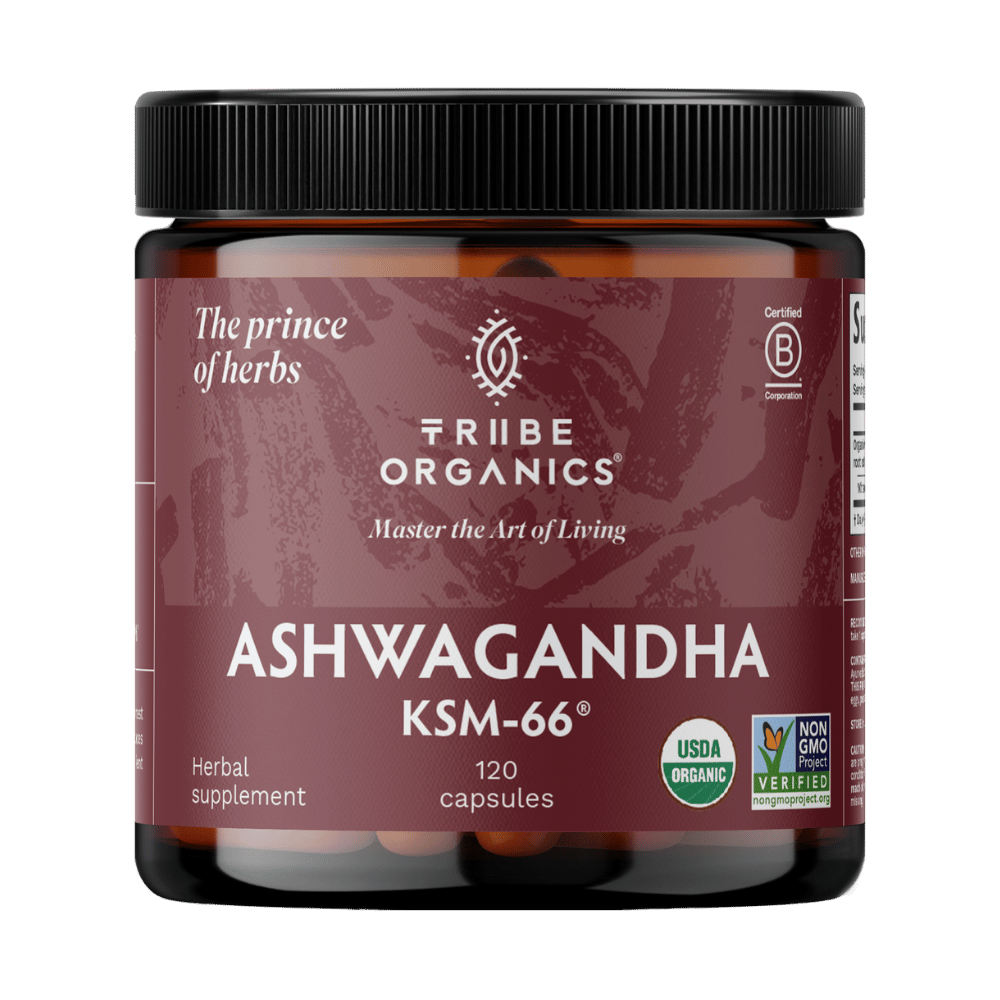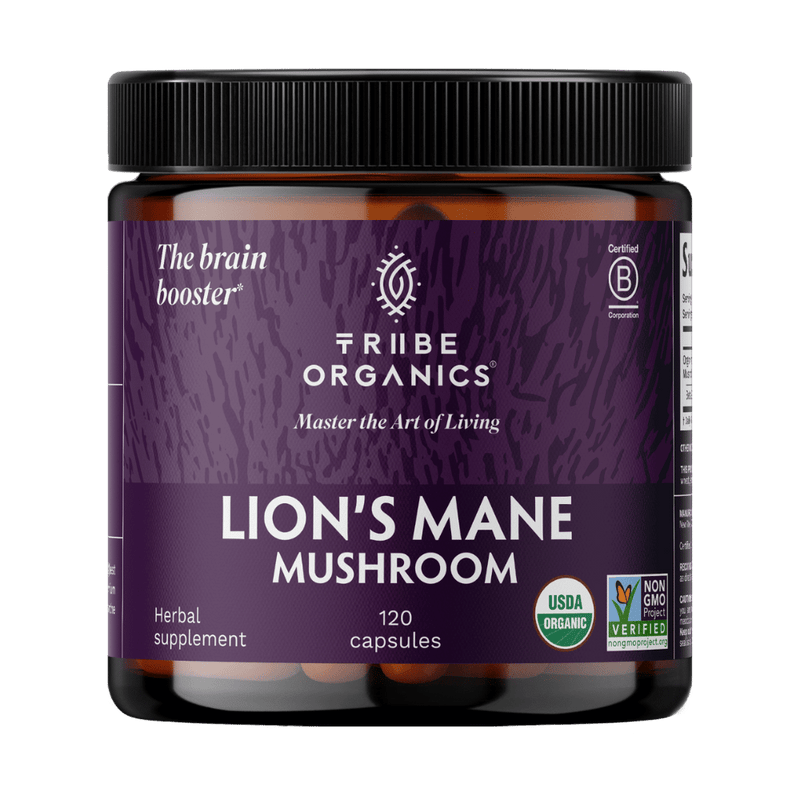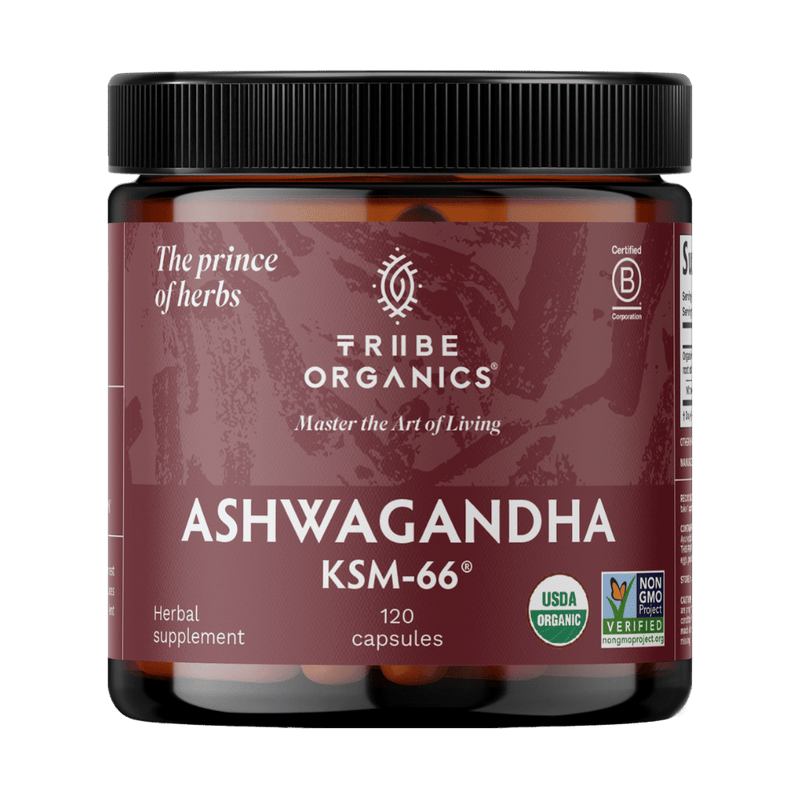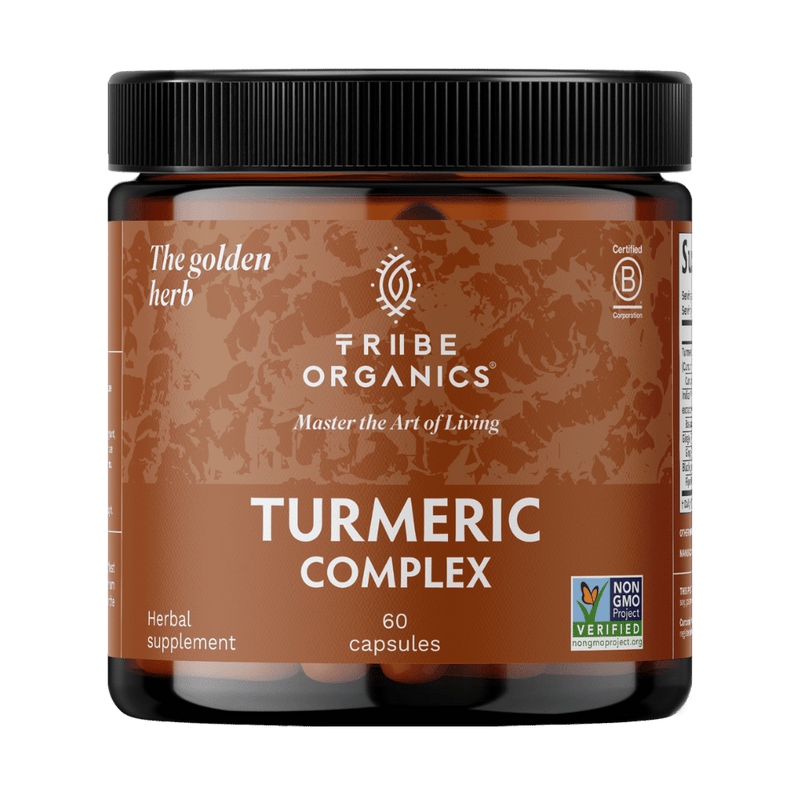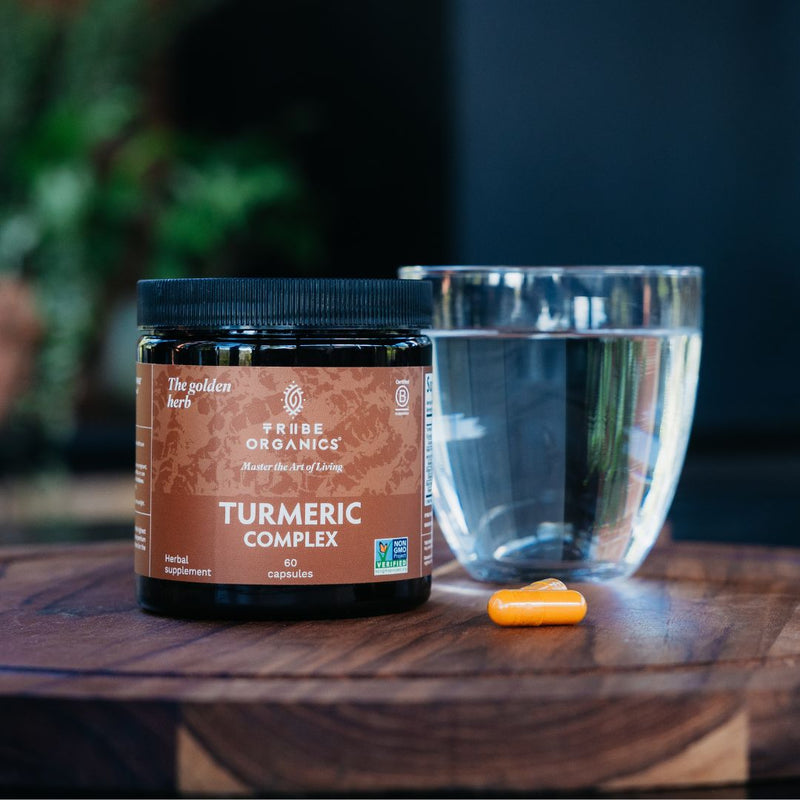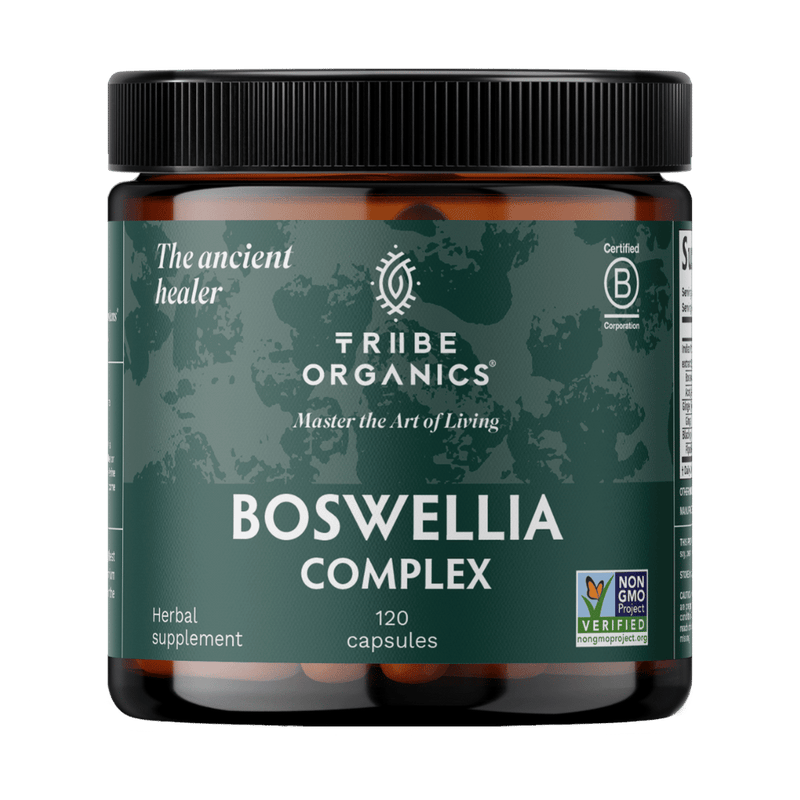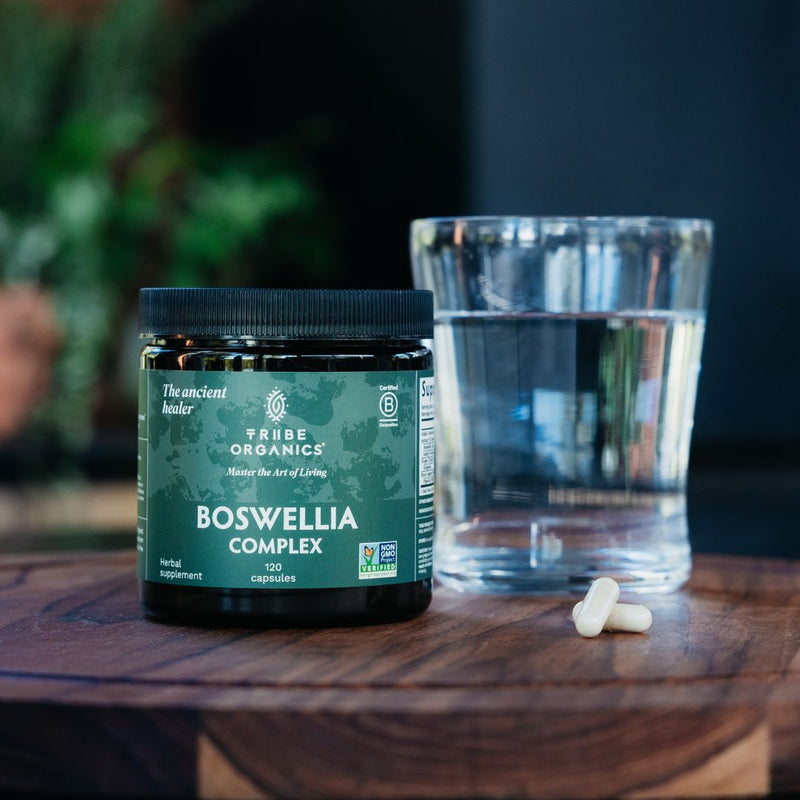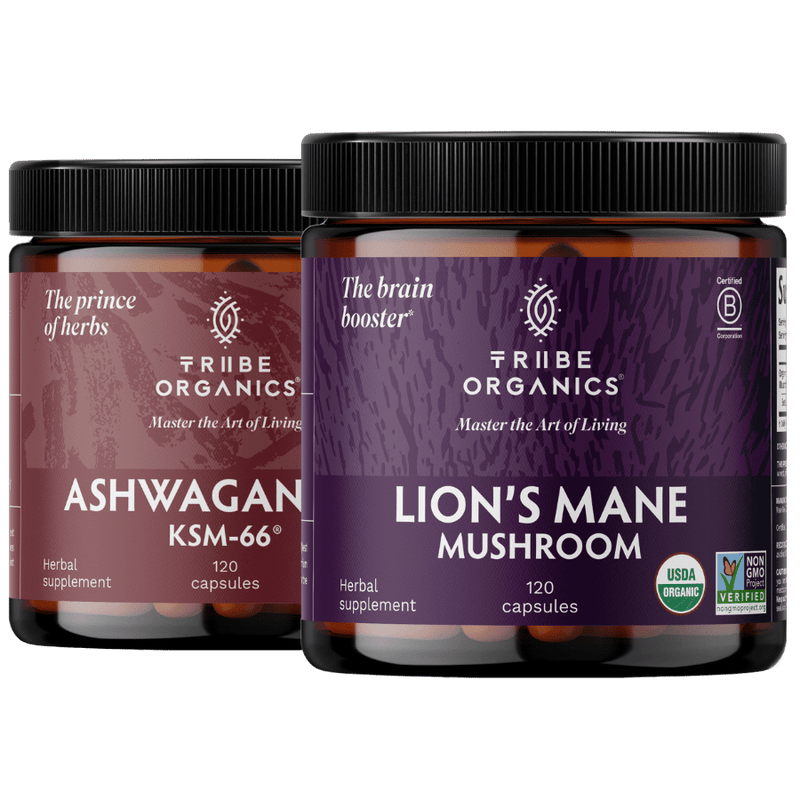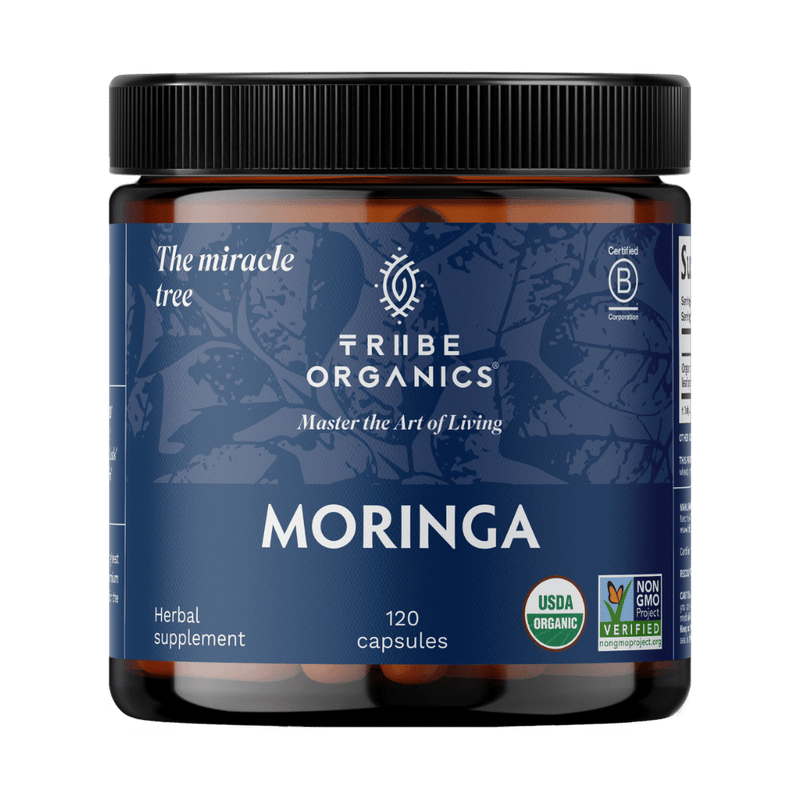Key Takeaways
- Most females should take 300-600 mg of ashwagandha root extract daily, split into two doses for optimal absorption and tolerability
- For stress and anxiety relief, women can start with 300 mg daily and increase to 500-600 mg if needed based on clinical research
- PCOS management typically requires 300 mg twice daily (600 mg total) combined with other evidence-based supplements
- Pregnant and breastfeeding women should completely avoid ashwagandha due to safety risks identified in animal studies
- Women should consult healthcare providers before starting ashwagandha, especially if taking hormonal medications or managing thyroid disorders
Ashwagandha has emerged as one of the most researched adaptogens in herbal medicine, with growing interest among women seeking natural solutions for stress management, sleep improvement, and hormonal balance. This ancient ayurvedic medicine, also known as indian ginseng, has been validated through numerous randomized controlled trials and systematic reviews. However, determining how much ashwagandha per day is optimal for females requires understanding individual health goals, safety considerations, and the quality of ashwagandha supplements available.
The ashwagandha plant (ashwagandha withania somnifera) contains bioactive compounds called withanolides, which are responsible for many of ashwagandha’s benefits. Clinical trials consistently show that standardized ashwagandha root extract provides the most reliable results for reducing stress and anxiety, improving sleep quality, and supporting hormonal balance in women.

Recommended Daily Ashwagandha Dosage for Women
The optimal ashwagandha dosage for women typically ranges from 300-600 mg daily of standardized root extract, with most randomized double blind placebo controlled studies using doses within this range. This recommendation comes from extensive clinical and research information showing consistent benefits without significant adverse effects.
Standard Dosage Guidelines:
- Beginner dose: Start with 300 mg once daily with food to assess tolerance
- Optimal dose: 300 mg twice daily (morning and evening) for most health benefits
- Maximum safe dose: 600 mg daily for up to 12 weeks based on current research
- Timing recommendations: Take with meals to reduce potential digestive upset and enhance absorption
Women should begin with the lower end of the dosage range and gradually increase as needed. This approach, supported by integrative medicine practitioners, helps minimize potential side effects while allowing the body’s response to adapt to the herbal supplement. The standardized ashwagandha root extract should contain at least 5% withanolides for optimal therapeutic effects.
More research continues to refine dosing recommendations, but current evidence from double blind placebo controlled studies suggests that splitting the daily dose provides better tolerability than taking the full amount at once. This is particularly important for women who may experience digestive sensitivity with herbal supplements.
Ashwagandha Dosage for Specific Female Health Goals
For Stress and Anxiety Management
Chronic stress affects women disproportionately, and ashwagandha has shown remarkable potential in modulating stress hormones, particularly cortisol levels. Clinical trials demonstrate that ashwagandha can significantly reduce perceived stress and support the central nervous system’s response to stressors.
Dosing Protocol for Stress Relief:
- Starting dose: 300 mg daily for the first week to assess tolerance
- Effective dose: 500-600 mg daily after week one for optimal cortisol reduction
- Duration: 6-8 weeks minimum for noticeable stress hormone modulation
- Best timing: Split dose between morning and evening to maintain steady blood levels
A placebo controlled study involving stressed adults showed that 600 mg daily of ashwagandha extract significantly reduced cortisol levels by up to 30% compared to placebo. This reduction in the primary stress hormone correlates with improved mood and anxiety treatments outcomes in women dealing with generalized anxiety disorder.
For Sleep Quality Improvement
Sleep disturbances affect many women, particularly during hormonal transitions. Ashwagandha’s ability to improve sleep quality stems from its effects on the central nervous system and its role in promoting restful sleep through stress-relieving mechanisms.
Sleep Enhancement Protocol:
- Recommended dose: 600 mg daily for significant sleep disorders
- Timing: Take the full dose 1-2 hours before bedtime for optimal sedative effects
- Duration: Minimum 8 weeks for substantial sleep improvements based on clinical trials
- Combination therapy: Often works synergistically with magnesium for enhanced sleep benefits
Research indicates that taking ashwagandha consistently can lead to improved sleep efficiency and reduced time to fall asleep. The improved sleep quality often occurs alongside reduced stress levels, creating a positive cycle of wellness for women managing both issues simultaneously.
For PCOS and Hormonal Balance
Polycystic ovary syndrome (PCOS) affects hormone balance in many women, and ashwagandha may support hormonal regulation through its effects on sex hormones and insulin sensitivity. While not a standalone treatment, it can be part of comprehensive PCOS management.
PCOS Support Protocol:
- Standard PCOS dose: 300 mg twice daily (600 mg total) based on randomized controlled trial data
- Combination therapy: Often paired with inositol, vitamin D, and other evidence-based supplements
- Duration: 3-6 months for meaningful hormonal regulation effects
- Monitoring: Regular hormone level checks recommended with healthcare provider oversight
Women with PCOS should work closely with their healthcare provider when incorporating ashwagandha into their treatment plan, as it may interact with other hormonal interventions and requires monitoring for effectiveness and safety.
For Fitness and Athletic Performance
Active women may benefit from ashwagandha’s effects on cardiorespiratory endurance, muscle recovery, and exercise-induced stress responses. Research suggests that the supplement can enhance physical performance when used appropriately.
Athletic Performance Protocol:
- Performance dose: 500 mg daily for endurance improvement in healthy young adults
- Strength training support: 300-600 mg daily for enhanced muscle recovery
- Pre-workout timing: Take 1-2 hours before exercise for optimal acute ashwagandha ingestion effects
- Post-workout benefits: May help reduce exercise-induced cortisol elevation
Studies involving healthy adults show that consistent ashwagandha use can improve muscle strength and reduce exercise-related fatigue, making it particularly valuable for women engaged in regular fitness routines.

Factors Affecting Ashwagandha Dosage in Women
Several individual factors influence how much ashwagandha per day women should take for optimal benefits. Understanding these variables helps personalize dosing for better outcomes and safety.
Key Individual Considerations:
- Body weight and size: Larger individuals may need doses toward the higher end of the safe range, though this relationship isn’t linear
- Age considerations: Older women may be more sensitive to ashwagandha’s effects and should start with lower doses
- Symptom severity: Women with more severe stress, anxiety, or sleep issues may require higher doses within safe limits
- Individual sensitivity: Some women achieve excellent results with 300 mg daily, while others need 600 mg for similar benefits
- Supplement quality: Higher concentration ashwagandha extracts require smaller doses compared to less standardized preparations
The body’s response to ashwagandha can vary significantly between individuals, making it important to start conservatively and adjust based on observed effects. Women taking other medications or managing existing health conditions should pay particular attention to how their bodies respond to different dosage levels.
Safety Considerations for Women Taking Ashwagandha
While ashwagandha is generally considered safe for healthy adults, specific populations of women should exercise caution or avoid the supplement entirely. Understanding these safety considerations is crucial for responsible use.
Who Should Avoid Ashwagandha
Certain groups of women should not take ashwagandha due to potential risks identified through clinical research and traditional medicine knowledge:
Complete Avoidance Recommended:
- Pregnant women: Animal studies suggest risk of miscarriage and premature labor, making ashwagandha unsafe during pregnancy
- Breastfeeding mothers: Unknown effects on infant development mean nursing women should avoid ashwagandha supplements
- Women with autoimmune conditions: May overstimulate the immune system, potentially worsening conditions like rheumatoid arthritis or lupus
- Those with thyroid disorders: Can affect thyroid hormone levels, potentially interfering with thyroid medication effectiveness
The National Institute of Digestive and Kidney diseases emphasizes the importance of consulting healthcare providers before starting any herbal supplements, particularly for women with existing medical conditions.
Potential Drug Interactions
Ashwagandha can interact with various medications commonly used by women, making medical supervision important for safe supplementation:
Key Medication Interactions:
- Birth control pills: May affect hormonal contraceptive effectiveness through liver enzyme interactions
- Thyroid medications: Can interfere with levothyroxine absorption and thyroid hormone regulation
- Blood pressure medications: May enhance hypotensive effects, potentially causing dangerous blood pressure drops
- Sedatives and sleep aids: Can increase drowsiness effects, leading to excessive sedation
Women taking any prescription medications should discuss ashwagandha use with their healthcare provider to avoid potentially dangerous interactions.
Common Side Effects in Women
While ashwagandha is well-tolerated by most healthy adults, women may experience certain side effects, particularly when starting supplementation or taking higher doses.
Typical Side Effects:
- Mild effects: Drowsiness, upset stomach, loose stools, particularly common during the first week of use
- Hormonal effects: Some women report temporary changes in menstrual cycle timing or flow
- Rare but serious: Although uncommon, ashwagandha induced liver injury has been reported in some cases with long-term use
- When to discontinue: Stop use if experiencing persistent nausea, fatigue, or any concerning symptoms
Most side effects are mild and resolve as the body adjusts to the supplement. However, any persistent or concerning symptoms warrant medical evaluation, particularly given rare reports of drug induced liver injury associated with some herbal supplements.

How to Choose the Right Ashwagandha Supplement
The effectiveness of ashwagandha supplementation largely depends on choosing high-quality ashwagandha preparations. Not all dietary supplements are created equal, making informed selection crucial for optimal results.
Quality Indicators to Consider:
- Extract standardization: Look for products containing at least 5% withanolides, the active compounds responsible for therapeutic effects
- Reputable brands: Choose manufacturers that conduct third-party testing and have good manufacturing practices
- Form preferences: Capsules, powders, or tablets each offer different advantages based on lifestyle and absorption preferences
- Avoid unnecessary additives: Check labels for fillers, artificial colors, or other unnecessary ingredients that don’t enhance efficacy
- Quality certifications: Look for USP, NSF, or similar third-party quality verification marks
The complementary and integrative health community emphasizes that standardized ashwagandha root extract provides more predictable results than non-standardized ashwagandha root supplements. This standardization ensures consistent withanolide content across different batches and manufacturers.
Starting Your Ashwagandha Journey
Beginning ashwagandha supplementation requires a thoughtful approach that prioritizes safety while maximizing potential benefits of ashwagandha for women’s health goals.
Step-by-Step Implementation:
- Healthcare consultation: Always consult with your healthcare provider first, especially if you have existing health conditions or take other medications
- Start low and go slow: Begin with 300 mg daily for one week to assess individual tolerance and response
- Monitor effects: Track stress levels, sleep quality, energy levels, and any side effects using a simple journal
- Gradual increase: After the initial week, consider increasing to 600 mg daily if needed and well-tolerated
- Regular evaluation: Assess benefits and any adverse effects after 4-6 weeks of consistent use
The principles of integrative medicine suggest that combining ashwagandha with other stress-reduction strategies like meditation, regular exercise, and adequate sleep can enhance overall wellness outcomes. This holistic approach aligns with traditional ayurveda research and modern complementary and integrative health practices.
Remember that ashwagandha is not a quick fix but rather a tool to support your body’s natural stress response and promote balance over time. Patience and consistency are key to experiencing the full several health benefits this ancient herb can offer.
FAQ
Can women take ashwagandha during menstruation?
Yes, ashwagandha is generally safe during menstruation and may actually help reduce stress-related menstrual irregularities. Some women report improved PMS symptoms when taking 300-600 mg daily, as the supplement’s stress-reducing properties can help manage mood swings and physical discomfort. However, monitor for any changes in cycle length or flow intensity, and consult your healthcare provider if you notice significant alterations to your menstrual pattern.
Is it safe for women over 50 to take ashwagandha?
Ashwagandha can be beneficial for postmenopausal women dealing with stress, sleep issues, and age-related cognitive concerns. However, women over 50 should start with a lower dose of 300 mg daily due to potentially increased sensitivity with age and slower metabolism. It’s particularly important to consult with your healthcare provider about potential interactions with hormone replacement therapy or other medications commonly used by older women.
How long does it take for ashwagandha to work in women?
The timeline for experiencing ashwagandha’s benefits varies by health goal. For stress relief, most women notice improvements within 2-4 weeks of consistent use at 500-600 mg daily. Sleep improvements typically become apparent after 4-8 weeks of regular supplementation. For hormonal balance and PCOS-related benefits, it may take 3-6 months to see significant changes in hormone levels and related symptoms. Consistency is key to achieving these benefits.
Can ashwagandha affect female fertility?
Some preliminary research suggests ashwagandha may support female fertility by reducing stress levels, which can negatively impact reproductive health. However, due to limited safety data in reproductive-age women and potential effects on hormone levels, women actively trying to conceive should avoid ashwagandha or use it only under strict medical supervision. The herb’s traditional use in ayurveda includes fertility support, but more research is needed to confirm safety during conception attempts.

Should women cycle on and off ashwagandha?
Most current research supports continuous use of ashwagandha for up to 3 months safely without breaks. However, some integrative medicine practitioners recommend taking a 1-2 week break every 12 weeks to assess whether the supplement is still needed and to prevent potential tolerance development. This cycling approach also allows you to evaluate how much the supplement is contributing to your overall wellness versus other lifestyle factors. Always discuss long-term supplementation plans with your healthcare provider.
Frequently Asked Questions
Shop best sellers
Explore our collection of favorite items that have gained popularity for their quality and satisfaction.



